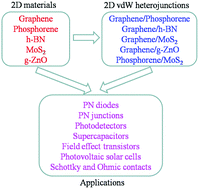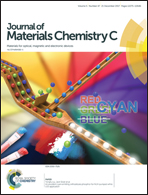Two-dimensional van der Waals heterojunctions for functional materials and devices
Abstract
Two-dimensional (2D) materials, such as graphene, phosphorene, graphitic carbon nitride (g-C3N4), graphitic zinc oxide (g-ZnO) and transition metal dichalcogenides (TMDs, e.g., MoS2), have already attracted extensive attention due to their outstanding properties and wide range of applications in electronic and optoelectronic devices. In particular, 2D van der Waals heterojunctions combining the electronic structures of such 2D materials have also been predicted theoretically and synthesized experimentally to expect more new properties (e.g., bandgap opening in graphene, semiconductor band alignment, charge transfer and new optical absorption) and potential applications (e.g., solar cells, field-effect transistors (FFTs), PN junctions, PN diodes and photodetectors) far beyond corresponding 2D materials. This review focuses on recent theoretical works about 2D van der Waals heterojunctions especially for functional materials and devices such as photovoltaic solar cells (phosphorene/MoS2 and edge-modified phosphorene nanoflake based heterojunctions), Schottky and Ohmic contacts (graphene/MoS2 based heterojunctions), PN junctions (graphene/g-ZnO based heterojunctions) and supercapacitors (graphene/h-BN based heterojunctions). These theoretical simulations and designs of 2D van der Waals heterojunctions provide a promising direction for high-performance electronic and optoelectronic devices in experiments.

- This article is part of the themed collections: Recent Review Articles and 2D Materials


 Please wait while we load your content...
Please wait while we load your content...